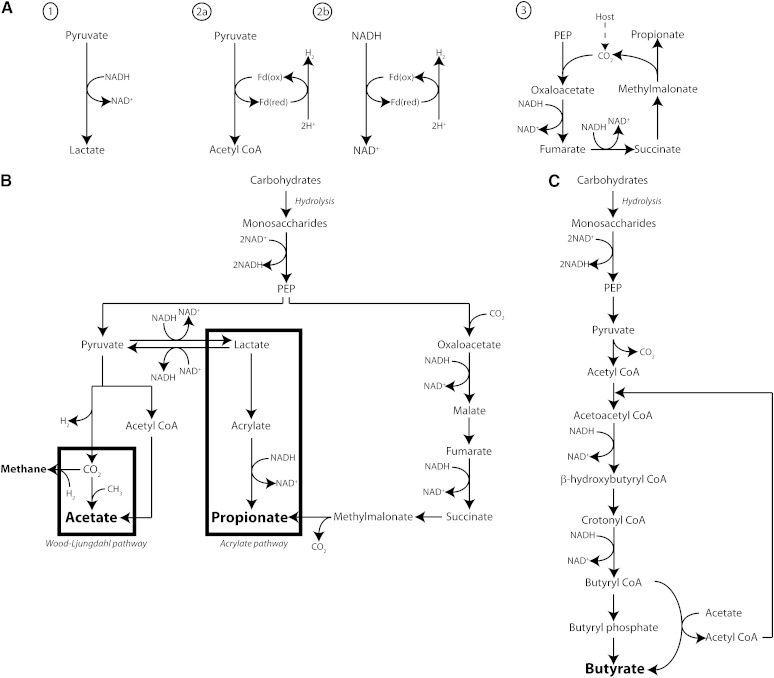Fig. 1.
Schematic overview of the three pathways that gut microbes use to get rid of excess reducing equivalents A: Pyruvate reduced to lactate thereby reducing NADH (1), pyruvate:ferredoxin oxidoreductase and hydrogenase (2a) or NADH:ferredoxin oxidoreductase and hydrogenase to sink reducing equivalents into molecular H2 (2b), and primitive anaerobic electron transport chain for reducing NADH (3). B, C: Schematic overview of the production of acetate, propionate, and butyrate from carbohydrates. B: Acetate is either formed directly from acetyl CoA or via the Wood-Ljungdahl pathway using formate. Propionate can be formed from PEP through the succinate decarboxylation pathway or through the acrylate pathway in which lactate is reduced to propionate. C: Condensation of two molecules of acetyl CoA results in butyrate by the enzyme butyrate-kinase or by utilizing exogenously derived acetate using the enzyme butyryl-CoA:acetate-CoA-transferase.

